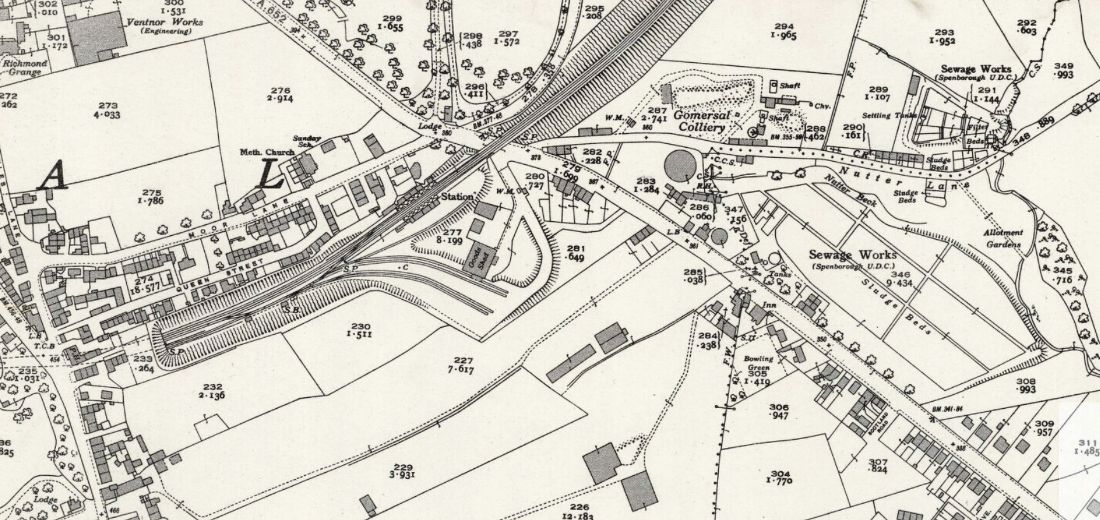The two shafts at this colliery, the site of which is now in the grounds of Oakwell Hall, were sunk by Birkenshaw Collieries Ltd between 1913 and 1916. At first the Blocking or Silkstone seam was worked with an average of 62 men working underground and 16 on the surface. The colliery was taken over by the Birkenshaw Collieries Co. Ltd in 1920, but it struggled between 1921 and 1931, with low numbers employed and periods of closure. The recovery began in 1932, by which time the directors of the company were members of the Gill family, who all lived fairly locally. Between 1934 and 1945 the company employed an average of 131 men underground and 29 on the surface.
The National Coal Board took Gomersal over on January 1st 1947 and continued working the Beeston seam until 1973. It also worked the Blocking seam in 1958 to 1973. The Beeston coal was about 110 metres deep, and the Blocking coal was about 55 metres deep. In 1967 the NCB drove a drift from the surface to both seams.
Practically all of Gomersal’s output was hand got, and an attempt to mechanise coal getting in the 1950s was a failure. Faces were from 180 to 230 metres long, with those in the Beeston having a tail gate at either end and a main gate in the centre. Blocking faces, however, had a main and a tail gate, one serving either end of the face. The day shift hand filled the coal left by the preceding night shift. The afternoon shift then ripped the gate ends to make the main and tail gates full height, undercut the coal and bored it. The night shift finished undercutting the coal and rebuilt the conveyor belt along the face for the day shift to start filling again. The fillers’ stint was 14 to 15 metres long, about 0.6 to 0.7 metres high with a 1.8 metre deep cut.
A coal plough was tried on a face in the Blocking seam in the early 1970s, but it quickly proved unequal to the task. In 1973 a further attempt at mechanisation was overtaken by the colliery’s closure as a result of the Lofthouse inrush. It was judged that there was a significant danger of flooding from neighbouring old workings, of which there were many!
Further reading:
- NMRS Records, Gazetteer of British Collieries
- National Archives: BT31/20953/12547 (1912) Birkenshaw Collieries Ltd
- Coal, Colliery and Mining Forum (April 2015)
- Coal News, June 1973

OS Map, Yorkshire CCXXXII.6 – 1938
Reproduced by permission of the National Library of Scotland

